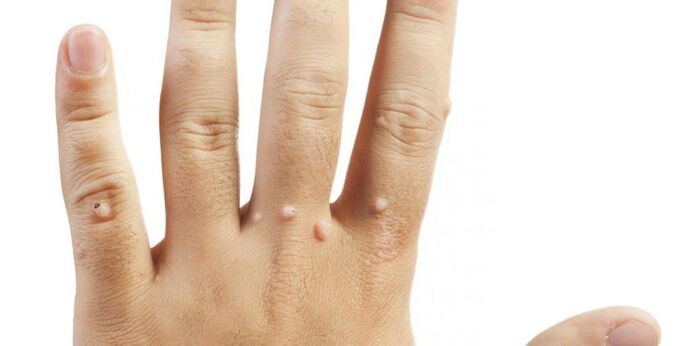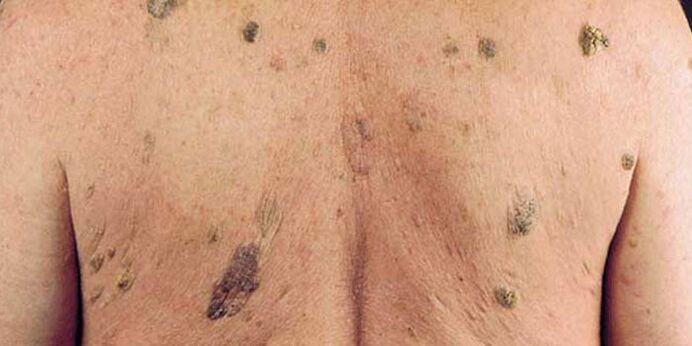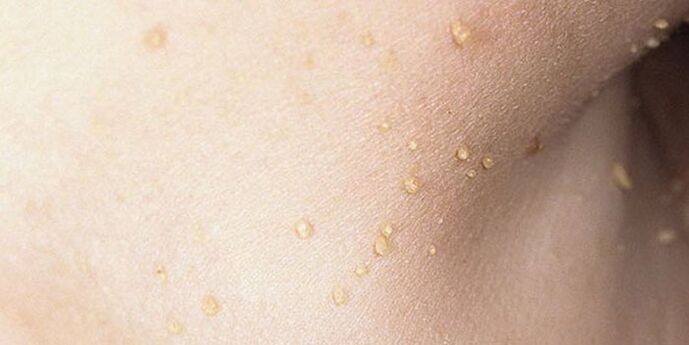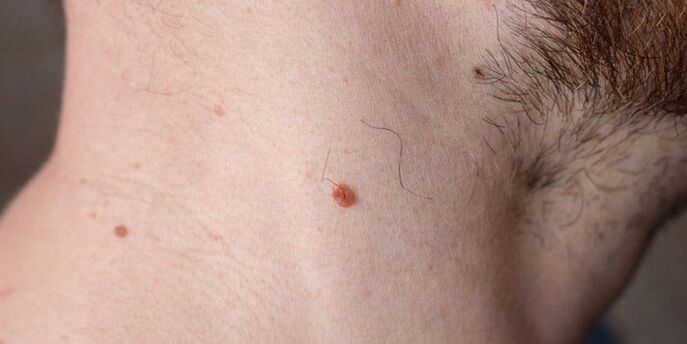If such a growth is visible on a person’s skin, then it begs the question about the types of changes that have taken place in the body and are they not dangerous? Read on for useful information about the characteristics of different types of papillomas. This information will help you to identify the presence of such formations in order to treat them in a timely manner if necessary.
Types of papillomas
Why do these processes often appear on the skin with age? The human papillomavirus, or HPV, triggers these changes in the skin briefly. After infection with such a pathogen, the patient develops papillomatosis disease, when warts of various forms appear on the skin or mucous membranes. These growths are benign, but some types of papillomas have a high risk of being regenerated as a malignant tumor. For this reason, you should definitely visit a doctor if you notice such changes on your skin!
The medicine knows more than 40 types of papillomavirus virus, which causes different types of the disease in humans. The type of virus that entered the body depends on the appearance of the papilloma, because the infection manifests itself externally according to different types of formations on the ingestion of the body. According to the general classification, the following types of growth are distinguished.
- Simple growths, also known as vulgar-keratinized of dark color.
- Plantar - affects the soles of the feet.
- Acrochords are thread-like formations, whose bodies are located on a foot.
- Flat formations or warts are common - they often occur in teenagers in the area of the hands, fingers, face.
- Punctuated - localized on the mucous membranes of the oral cavity, genitals or anus.
- Squamous cells - composed of squamous epitheliiam, which grew due to the effects of the virus, and the stroma (the basis of connective tissue and blood vessels).
- Basic cell - growth from cells of the basal layer of the epidermis or from healthy hair.
- Internal - they do not arise in the area of the external visible parts of the body, but when they are difficult to notice, for example, in the larynx or bladder.

Mention
Such growth is often called warts. Their characteristic features are small size and special shape: wide base and sharp top. These warts are flesh-colored or slightly pink in color and appear singly or in groups. They are distinguished by rapid growth: in a few days, when there was only one growth, a whole group of them is formed. In shape, this family resembles a cauliflower inflorescence. Genital warts are often located on the mucous membranes: in the mouth, tongue, and in the genital area or near the anus.
Squamous
This type of skin growth caused by the HPV virus is one of the most common, as it can have a very wide localization throughout the body. What does this type of papilloma look like? These are flat formations of round or oval shape, slightly protruding above the surface of the skin - no more than 1 mm, soft and with signs of keratinization. They are often seen in groups, in a color that is practically no different from the surrounding cover.
Such growth occurs mainly in the upper body: in the face (for example, on the nose or lip), neck. They are often seen on the mucous membranes: inside the mouth on the cheeks or on the tongue. Squamous cell tumors can be diagnosed in the esophagus, larynx, as well as organs of the genitourinary system and even in the rectum. People with such formations are advised to remove them because of the high risk of malignant degradation.
Basal cell
These growths are often called basaliomas or senile warts as they often affect the skin of the elderly. These formations grow slowly from the basal layer of the epidermis (hence the name) or from hair follicles, appearing on the surface of the skin in the form of papillae ranging in color from pink to dark brown. The areas of the body where basal cell carcinoma is common are the amputations, back, and lips and nose. Their distinguishing feature is that they never degrade in cancer tumors, therefore, they are considered safe.

What papillomas look like in intimate places
For formations in the genital area, punctuated formations are. Papillomas of this type, which look like small papillae groups, are overgrown cells of the upper layer of the epitheliiam. Such growths can affect both sexes as often. They are localized in the groin and directly on the surface of the genitals: in men - on the head of the penis or in the lumen of the urethra, in women - on the vaginal mucosa, on the surface of the cervix and in the uterus itself.
Particular attention needs to be paid to the patient for changes in genital organ ingestion, which occur as a result of human infection with the HPV virus. It is necessary to consult a doctor and remove the growths of the genitals, because the way in which such illness is transferred to a chronic form, the risk of infertility and oncology increases significantly.
Photo: what papillomas look like on the body
In order to accurately and clearly imagine for yourself what these formations are, it will be useful for you to look at the images of what such growths look like. Check out this photo selection showing examples of different types of papillomas. These photos check the growths of you or your relatives, and you can determine in advance whether these warts are subject to mandatory removal, and prevent serious risks to your health.
















































































